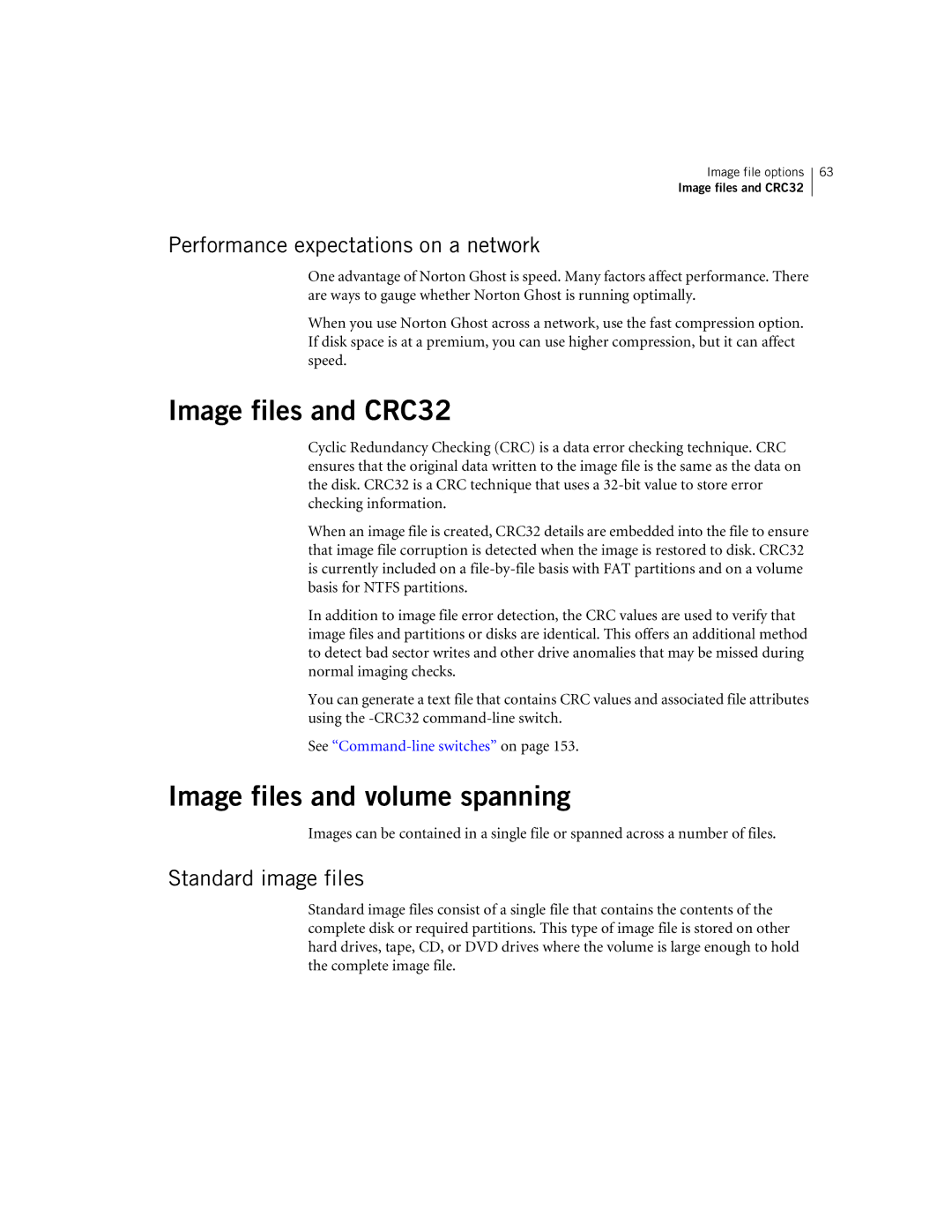Image file options
Image files and CRC32
63
Performance expectations on a network
One advantage of Norton Ghost is speed. Many factors affect performance. There are ways to gauge whether Norton Ghost is running optimally.
When you use Norton Ghost across a network, use the fast compression option. If disk space is at a premium, you can use higher compression, but it can affect speed.
Image files and CRC32
Cyclic Redundancy Checking (CRC) is a data error checking technique. CRC ensures that the original data written to the image file is the same as the data on the disk. CRC32 is a CRC technique that uses a
When an image file is created, CRC32 details are embedded into the file to ensure that image file corruption is detected when the image is restored to disk. CRC32 is currently included on a
In addition to image file error detection, the CRC values are used to verify that image files and partitions or disks are identical. This offers an additional method to detect bad sector writes and other drive anomalies that may be missed during normal imaging checks.
You can generate a text file that contains CRC values and associated file attributes using the
See “Command-line switches” on page 153.
Image files and volume spanning
Images can be contained in a single file or spanned across a number of files.
Standard image files
Standard image files consist of a single file that contains the contents of the complete disk or required partitions. This type of image file is stored on other hard drives, tape, CD, or DVD drives where the volume is large enough to hold the complete image file.
